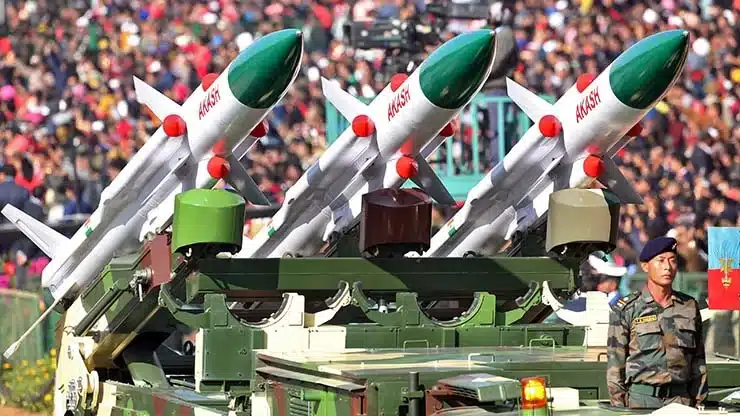India’s Defence Vision: A Self-Reliant Future

In a significant address at a Defence Conclave in New Delhi on April 17, 2025, Defence Minister Rajnath Singh outlined a bold vision for a self-reliant India, emphasizing indigenisation and innovation in the defence sector. He asserted that India is not only focused on securing its borders but is also poised to become a major player in the global defence landscape. Singh expressed confidence that India would emerge as a developed nation with unparalleled military strength in the near future.
Government’s Commitment to Indigenisation
During his speech, Rajnath Singh reiterated the government’s commitment to transforming India’s defence sector under Prime Minister Narendra Modi‘s leadership. He highlighted the necessity of shifting the mindset from reliance on imports to fostering a robust domestic defence industrial complex. “India will reduce its dependency on imports and create a defence industrial complex that will not only meet India’s needs but will also strengthen the potential of defence exports,” he stated. This shift aims to bolster national security while enhancing India’s position in the global defence market.
Singh emphasized that the Make in India initiative is pivotal in strengthening domestic defence production and ensuring resilience in global supply chains. He noted that the current trajectory of India’s defence sector is not only about self-sufficiency but also about insulating manufacturing from international supply shocks. “Today, while India’s defence sector is moving ahead on the path of self-reliance, it is also ready to play a very important role in making global supply chains resilient,” he added.
Strategic Reforms and Capacity Building
Addressing the evolving nature of warfare, Singh pointed out that future conflicts are likely to be more violent and unpredictable, with cyber and space domains emerging as critical battlegrounds. He announced that 2025 would be designated as the ‘Year of Reforms’ for the Ministry of Defence, focusing on holistic capacity building and continuous reforms. One of the significant reforms mentioned was the corporatisation of the Ordnance Factories, which has transformed them into profit-making units after over 200 years of operation.
Singh also highlighted the government’s indigenisation drive, revealing that five positive indigenisation lists have been released by the Armed Forces and Defence Public Sector Undertakings (DPSUs). These lists include a total of 509 defence equipment and weapon systems to be produced domestically, alongside 5,012 items from the DPSU lists. He emphasized that 75% of the defence budget is now reserved for procurement from domestic companies, showcasing a commitment to boosting local manufacturing capabilities.
Boosting Defence Exports and Innovation
Rajnath Singh reported a remarkable increase in defence exports, which surged from Rs 686 crore in 2013-14 to Rs 23,622 crore in 2024-25. He projected that defence exports would reach Rs 30,000 crore this year and aim for Rs 50,000 crore by 2029. Singh noted that Indian defence products are now being exported to approximately 100 countries, highlighting India’s growing influence in the global defence market.
To foster innovation, particularly among youth and start-ups, the government has launched several initiatives, including the iDEX program, which provides financial support to selected start-ups. The recently introduced iDEX Prime enhances this support significantly, while the ADITI scheme aims to assist breakthrough innovations. Singh stated that the Ministry of Defence has approved purchases worth over Rs 2,400 crore from start-ups and MSMEs, further encouraging technological advancements in the sector.
India’s Strategic Capabilities and Future Goals
In his address, Singh underscored India’s advancements in critical areas such as missile technology, submarines, aircraft carriers, and artificial intelligence. He acknowledged the challenges in aero engine manufacturing but noted progress in the Kaveri engine project and ongoing collaborations with global firms to enhance domestic capabilities. Furthermore, he highlighted that over 97% of the Indian Navy and Coast Guard’s warships are now built in Indian shipyards, with exports to friendly nations like Mauritius and Vietnam.
The conclave was attended by senior officials and experts, including former military chiefs and defence officials, underscoring the collaborative effort towards strengthening India’s defence capabilities. As the nation moves forward, the emphasis on self-reliance and innovation is set to redefine India’s role in the global defence arena.
Observer Voice is the one stop site for National, International news, Sports, Editor’s Choice, Art/culture contents, Quotes and much more. We also cover historical contents. Historical contents includes World History, Indian History, and what happened today. The website also covers Entertainment across the India and World.

